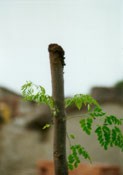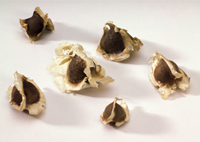All children deserve a quality education. Together, we can help them reach their dreams.
Learn more about Teach for Life, the educational branch of Trees for Life.

The Moringa tree is native to northern India, but today it is common throughout the tropical and sub-tropical regions of Asia, Africa, and Latin America.
Moringa trees grow easily from seeds or cuttings. They grow quickly even in poor soil and bloom 8 months after planting.

To grow from a cutting:
After the trees have stopped
producing fruits each year, branches
need to be cut off so that fresh
growth may take place. These
branches are excellent for growing
new trees.
In India, the custom is to put some cow dung on top of the open end of the cutting. This is an excellent way to protect the cutting from pests.

To grow from seed:
Moringa seeds have no
dormancy periods and can
be planted as soon as they
are mature.
In the ground:
It is best to plant the seeds directly where the tree is intended to grow and not transplant the seedling. The young seedlings are fragile and often cannot survive transplanting. To plant seeds directly in the ground:
Note: If the soil is heavy, dig a larger hole of up to 3 ft (90 cm) in diameter and 3 ft deep, and backfill with 1 part sand and 2 parts original soil. Added compost or manure will help.
When it is not possible to plant directly in the ground, use the following method:
 |
|
4. Remove extra seedlings, leaving one in each bag.
Seedlings can be transplanted after four to six months when they are 2-3 ft (60-90 cm) high.
The ground where the trees are to be planted should be light and sandy, not heavy with clay or water-logged.
Dig a hole 1 ft (30 cm) square and 1 ft deep. Backfill with loose soil. Adding compost or manure will help the trees grow better.
If the seedlings fall over, tie them to a stick for support. Protect young saplings from termites and nematodes.
back to Moringa Tree
back to What Can I Do
back to How do I grow the Moringa tree?